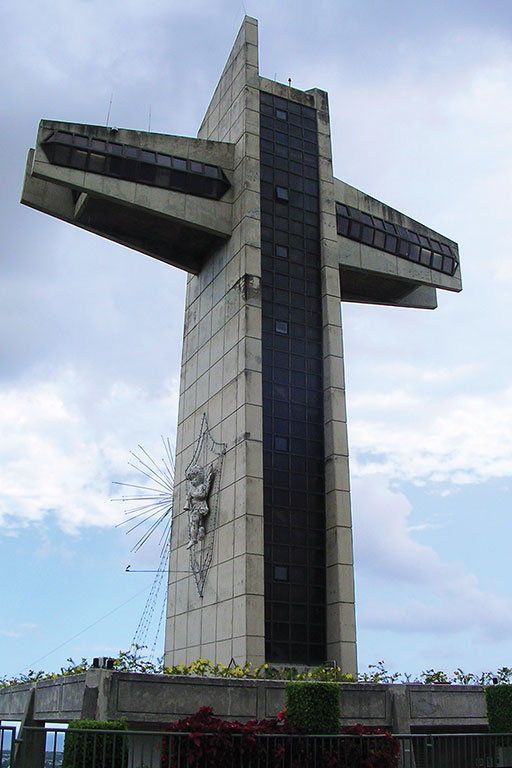Set high on a hill overlooking Ponce is a startling reminder of the height of the city’s flourishing sugar industry, when its port was the busiest on the island. Castillo Serrallés (17 Calle El Vigía, 787/259-1774, 787/259-1775, or 800/981-2275, Thurs.-Sun. 9:30am-5pm; gardens: $5.50 adults, $2.75 children; gardens, castle, and butterfly garden: $12.80 adults, $6.40 seniors, $5.50 children) was built in 1934 for Eugenio Serrallés, a leader in the local sugarcane industry and founder of the still-operating Serrallés Rum Distillery, maker of the island’s premier rum, Don Q.
![Street facade of the Castillo Serralles. Photo © Mtmelendez (Own work) [<a href="http://www.gnu.org/copyleft/fdl.html">GFDL</a> or <a href="http://creativecommons.org/licenses/by-sa/3.0/">CC-BY-SA-3.0</a>], <a href="https://commons.wikimedia.org/wiki/File%3ACastillo_Serralles.JPG">via Wikimedia Commons</a>.](https://www.holidaytravel.cc/Article/UploadFiles/201602/2016021614492599.jpg)
Street facade of the Castillo Serrallés. Photo © Mtmelendez (Own work) [GFDL or CC-BY-SA-3.0], via Wikimedia Commons.
Designed by architect Pedro Adolfo de Castro, the four-story Spanish Moroccan-style mansion was last inhabited in 1979 by Serrallés’s daughter. It became a museum in 1991. In the kitchen is a 1929 GE side-by-side refrigerator that still works.The house contains many of the Serrallés family’s original furnishings, many of them made by Puerto Rican artisans or imported from Europe, the oldest piece being a small 16th-century table in the foyer. No cost was spared in the construction of the house. The parquet wood floor in the parlor was imported from Brazil; the dining room, which took 18 months to build, features a painted, hand-carved ceiling made of oak, mahogany, and ceiba woods; and the black-and-cream bathrooms are designed in an art deco style. The building was technologically advanced for the times: It even has an intercom system with 14 receivers as well as an elevator. In the kitchen is a 1929 GE side-by-side refrigerator that still works. One room in the house has been converted into an exhibition space that explains and illustrates sugarcane processing and rum-making.
Cruceta del Vigía marks the site of a Spanish lookout station established in 1801. Photo © Suzanne Van Atten.
Across the street from Castillo Serrallés is Cruceta del Vigía ($6 adults, $3 students and seniors, includes admittance to Castillo Serrallés and the gardens), an enormous concrete cross with an observation deck built in 1984. It marks the site of a Spanish lookout station established in 1801 to watch over the Ponce harbor. At that time, a crude wooden cross was erected on the site that remained there until it was destroyed in 1998 by Hurricane Georges. The cross was used as a flag-signaling system to alert troops to the arrival of merchant ships in the harbor. If a white flag was raised, it meant the harbor was under possible attack.
Excerpted from the Fourth Edition of Moon Puerto Rico.